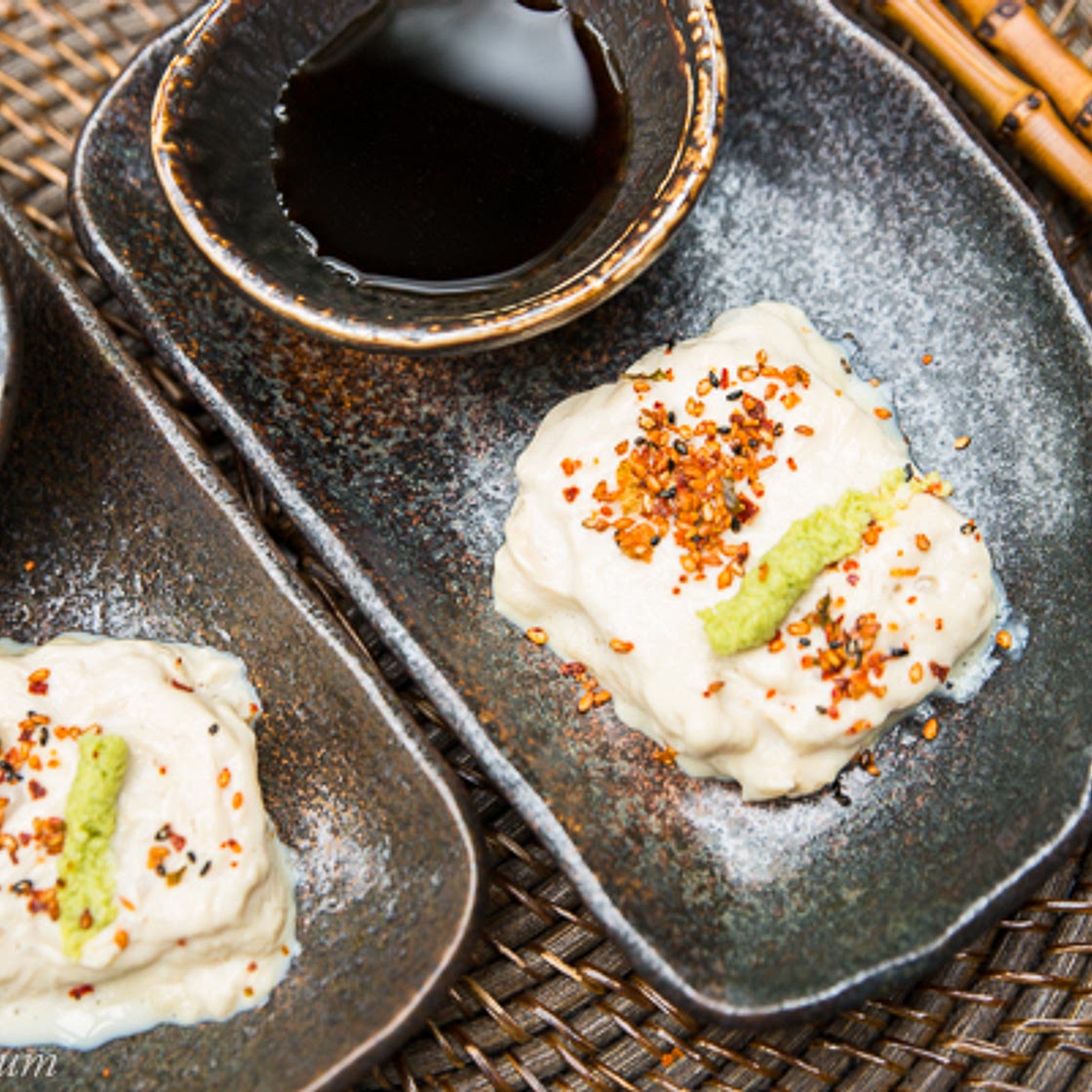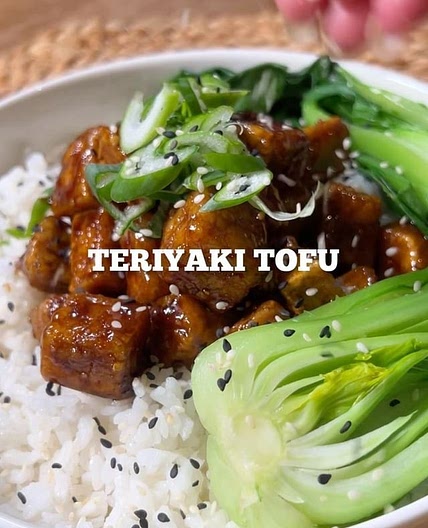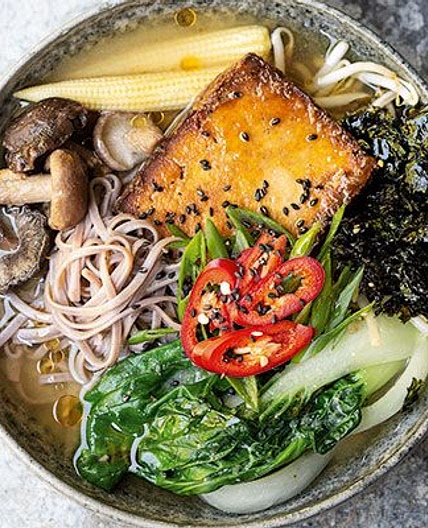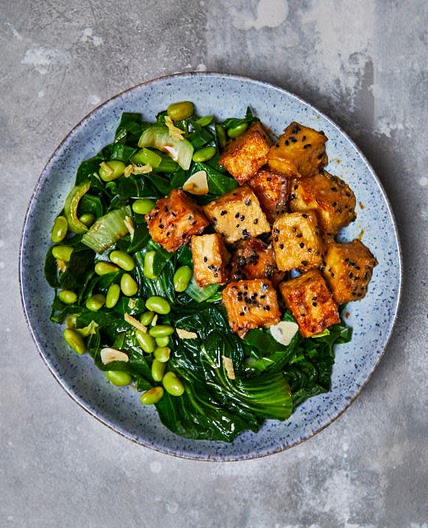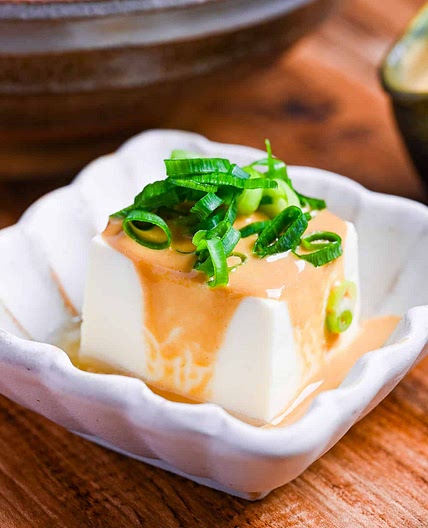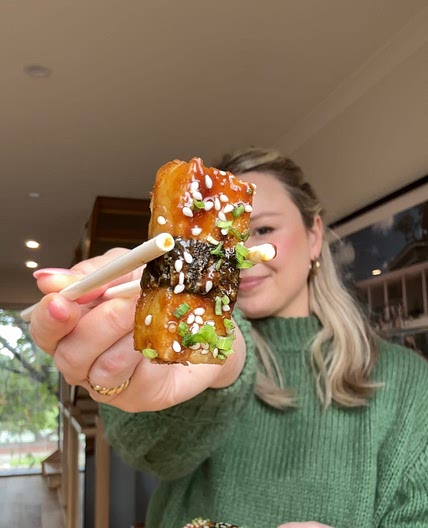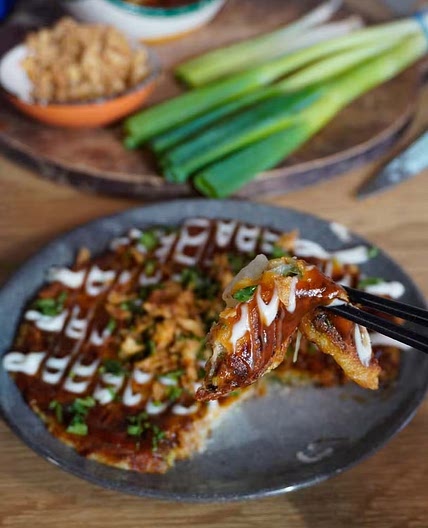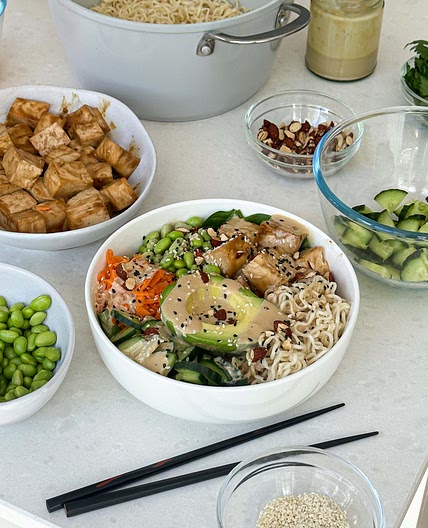By Katya Lyukum
Kumiage Yuba | Fresh Soy Milk Skins
12 steps
Prep:3hCook:5min
I say those are lucky who have never tasted certain delicacies because they don’t know what they are missing. If you didn’t enjoy eating fresh creamy and dreamy melt-in-your-mouth soy milk skins in Kyoto — kumiyage yuba — you don’t miss it. With a tiny drop of freshly grated wasabi and diluted with dashi soy sauce for dipping, it is something to crave for. Fortunately, it is easy to make at home. But I am not going to mislead you. Unfortunately, it is VERY time-consuming and meditative. It works only if you have another pleasant and easy task to switch to every 5 minutes that soy milk needs to form a skin. Setting a timer helps a lot.
Updated at: Thu, 17 Aug 2023 12:03:23 GMT
Nutrition balance score
Great
Glycemic Index
16
Low
Glycemic Load
3
Low
Nutrition per serving
Calories224.1 kcal (11%)
Total Fat9.4 g (13%)
Carbs16.2 g (6%)
Sugars4 g (4%)
Protein18.6 g (37%)
Sodium972.4 mg (49%)
Fiber4.6 g (17%)
% Daily Values based on a 2,000 calorie diet
Ingredients
4 servings
Instructions
Step 1
Soak soybeans 12-24 hours in a fridge and drain. They are soaked properly when skins are easy to remove.
Step 2
The amount of water for soaking should be three times the volume of beans.
Step 3
Measure water for cooking. Blend soaked soybeans in a blender adding some of that water on low speed.
Step 4
Transfer the soybean puree to a large pot. Heat soybean puree over medium-high heat. Stir the bottom with a spatula to prevent it from burning.
Step 5
When soybean mixture is nearly boiling, foam starts to build up. Note how high it can go. When it starts boiling, reduce the heat to low, and continue cooking for 8-10 minutes. Note how the aroma is changing during the cooking.
Step 6
Meanwhile, set up a bowl with a strainer lined with cloth or unscented paper towels. Strain soy milk.
Step 7
The solids in the strainer are called okara. Cover them with another paper towel and press out more milk.
Step 8
There you have warm and fresh soy milk, tonyu.
Step 9
Reserve okara for other cooking purposes.
for yuba
Step 10
In a frying pan, pour tonyu, making it 1/2" deep, and place over low heat. The heat level should keep the temperature of milk right below the simmering point.
Step 11
Prepare a container where finished yuba will be placed and add some soy milk in it. Prepare chopsticks with a smooth surface for scooping the skins. Insert a chopstick, scoop up yuba, and release into the container. Continue until all soy milk is used.
Step 12
Store fresh yuba for up to 3 days in a fridge in a closed container. Serve it with dashi-diluted soy sauce and wasabi.
View on lyukum.com
↑Support creators by visiting their site 😊
